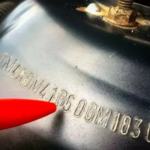Even in the recent past, in the heating system for the circulation of the coolant in residential buildings or small production facilities with an area of 100 – 200 m2, industrial pumps of the brand or km with a capacity of 1.1 or 1.5 kW. Today, instead of these pumps, energy-efficient pumps Wilo-Star, Wilo-Top, etc. were replaced., power, like an ordinary electric incandescent lamp from 70 to 150 watts. What minimal knowledge and information must be owned in order to choose the right pumping equipment or control his choice. The main indicators for choosing pumping equipment are performance and maximum pressure. If the pitch pump is designed for a heating system or hydraulic pump (hot water supply), then it is necessary to take into account the temperature of the water. The performance of pumping equipment is the volume of water that it pumps over a certain time. In the passport, this characteristic is Q, M3/h. If the pump is circulating, for the heating or water supply system, then it is necessary to take into account the volume of water that is in the system. In the event that the pump is selected for an artesian well (submersible pump), then its performance must correspond to the debit of the well and your need for water.
The debit of the well is a passport characteristic of the well, which indicates how much it can give water over a certain time. If the performance of the pump unit is greater than the debit of the well, then the pump may fail. The maximum pressure shows what height the pump can pump water, and m. If pumping equipment is selected for an artesian well, then the pressure must be compared with the depth of the well. When choosing a pump by pressure, it is necessary to take into account the horizontal section of the water supply or heating pipes and their resistance. If the pumps are designed for pumping waste or sewage water (fecal or drainage pump), then the degree of fluid contamination and the value of particles and impurities that are present in the pumped liquid are taken into account.






